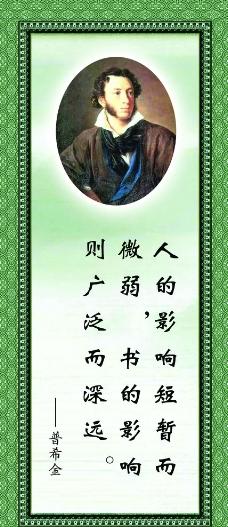
美国第四修正案
第四修正案是美国宪法的一部分,也是权利法案的关键部分,旨在保护个人
权利,限制政府的权力。它保护公民免受不合理的搜查和扣押,并确立了基于合
理怀疑的搜查令要求。
第四修正案内容:"人民在他们的人身、住宅、文件和财物上的安全不得受到
侵犯,不得进行不合理的搜查和扣押;除非有合理的怀疑,有宣誓或断言支持,
否则不得发布搜查令,而且搜查令必须明确描述搜查的地点以及要扣押的人或物。
"
免受不合理搜查和扣押:
第四修正案确保个人在人身、住宅、文件和财物方面拥有合理的隐私,政府
不能在不满足特定条件的情况下进行搜查和扣押。
合理怀疑:
政府必须有合理怀疑认为犯罪已经发生或者有犯罪证据存在,才能进行搜查
和扣押。合理怀疑是指基于具体事实的合理信念,即犯罪已经发生或者可以在要
搜查的地点找到犯罪证据。
搜查令:
通常情况下,第四修正案要求进行搜查和扣押时提供搜查令。搜查令是由法
官或执法官员签发的书面文件,授权执法人员进行搜查或扣押。为了获得搜查令,
政府必须向法官或执法官员证明其确有进行搜查或扣押的合理怀疑。
无需搜查令的例外情况:
尽管通常需要搜查令,但在以下情况下无需搜查令即可进行搜查和扣押:
a. 同意:如果个人自愿同意接受搜查,第四修正案不要求必须得有搜查令。
b. 明显可见:如果犯罪证据对于合法在场的执法人员来说明显可见,他们可
以在没有搜查令的情况下扣押证据。
c. 紧急情况:当存在对公共安全的直接威胁时,警察可以在没有搜查令的情
况下进行搜查和扣押。该例外情况适用于犯罪证据可能被破坏、需要防止危害或
伤害、或需要追捕逃跑嫌疑人的情况。
d. 逮捕事由搜查:在合法逮捕后,警察可以对被逮捕的人以及其直接控制的
区域进行搜查,目的是确保执法人员的安全和保护证据。
e. 汽车搜查:由于车辆具有流动性,最高法院认为执法人员在没有搜查令的
情况下对车辆进行搜查拥有更大的自由裁量权。
搜查令的具体性要求:
搜查令必须明确描述要搜查的地点以及要扣押的人或物。这个要求确保搜查
和扣押的范围限制在搜查令中明确提及的特定区域和物品之内。
排除性规则:
第四修正案的排除性规则规定,通过违反第四修正案而获得的证据在刑事诉
讼中通常是不可采用的。排除性规则起到威慑作用,阻止执法人员侵犯个人的第
四修正案权利。
第四修正案在保护个人隐私和权利方面起着重要作用,平衡个人权利与维护
公共安全的合法需要。多年来,法院对其进行了解释和适用,以适应不断变化的
技术和环境,同时坚持其核心原则。
英语原文参阅下文。
The Fourth Amendment to the United States Constitution
The Fourth Amendment to the United States Constitution is a crucial part of
the Bill of Rights, which safeguards individual rights and limits the power of the
government. It protects citizens against unreasonable arches and izures and
establishes the requirement of a warrant bad on probable cau.
Text of Fourth Amendment: "The right of the people to be cure in their
persons, hous, papers, and effects, against unreasonable arches and izures,
shall not be violated, and no Warrants shall issue, but upon probable cau,
supported by Oath or affirmation, and particularly describing the place to be
arched, and the persons or things to be ized."
Protection against Unreasonable Searches and Seizures:
The Fourth Amendment guarantees that individuals have the right to be
cure in their persons, hous, papers, and effects. This means that people have
a reasonable expectation of privacy in the areas, and the government cannot
conduct arches or izures without meeting certain criteria.
Probable Cau:
The government must have probable cau to believe that a crime has been
committed or that there is evidence of a crime before conducting a arch or
izure. Probable cau refers to a reasonable belief bad on specific facts that
a crime has occurred or that evidence of a crime can be found in the place to be
arched.
Warrants:
In general, the Fourth Amendment requires that arches and izures be
conducted with a warrant. A warrant is a written order issued by a judge or
magistrate that authorizes law enforcement officers to conduct a arch or izure.
To obtain a warrant, the government must demonstrate to the judge or
magistrate that there is probable cau for the arch or izure.
Exemptions from Warrant Requirement:
While warrants are generally required, there are exceptions when a arch or
izure can be conducted without a warrant:
a. Connt: If an individual voluntarily connts to a arch, the Fourth
Amendment does not require a warrant.
b. Plain View: If evidence of a crime is clearly visible to an officer who is
lawfully prent in a location, the officer may ize it without a warrant.
c. Exigent Circumstances: When there is an immediate threat to public safety,
the police may conduct a arch or izure without a warrant. This
exception applies when there is a risk of destruction of evidence, the need
to prevent harm or injury, or the pursuit of a fleeing suspect.
d. Incident to Arrest: Following a lawful arrest, the police may conduct a
arch of the person arrested and the area within their immediate control
for the purpo of officer safety and prerving evidence.
e. Automobile Searches: Due to the mobile nature of vehicles, the Supreme
Court has recognized that law enforcement officers have greater leeway
in conducting arches of vehicles without a warrant.
Specificity in Warrants:
Warrants must describe with particularity the place to be arched and the
persons or things to be ized. This requirement ensures that the scope of the
arch or izure is limited to the specific areas and items mentioned in the
warrant.
Exclusionary Rule:
The Fourth Amendment's exclusionary rule states that evidence obtained
through an unreasonable arch or izure in violation of the Fourth Amendment
is generally inadmissible in criminal proceedings. The exclusionary rule acts as a
deterrent, discouraging law enforcement officers from violating individuals'
Fourth Amendment rights.
The Fourth Amendment plays a vital role in protecting individual privacy and
balancing it against the legitimate needs of law enforcement to maintain public
safety. It has been interpreted and applied by courts over the years to adapt to
changing technologies and circumstances while upholding its core principles.

本文发布于:2023-11-12 04:23:30,感谢您对本站的认可!
本文链接:https://www.wtabcd.cn/zhishi/a/1699734210213199.html
版权声明:本站内容均来自互联网,仅供演示用,请勿用于商业和其他非法用途。如果侵犯了您的权益请与我们联系,我们将在24小时内删除。
本文word下载地址:美国第四修正案具体都讲了什么——中英对照.doc
本文 PDF 下载地址:美国第四修正案具体都讲了什么——中英对照.pdf
| 留言与评论(共有 0 条评论) |